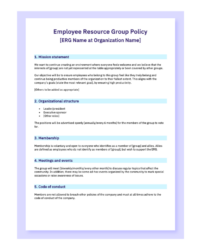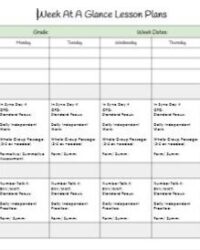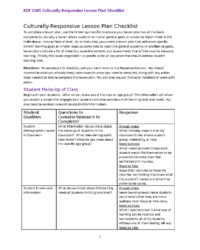Ever feel like you’re constantly juggling to keep students engaged while also ensuring they’re learning deeply? It’s a common challenge for educators, isn’t it? We all strive for that sweet spot where lessons aren’t just informative but genuinely captivating, making students think critically and connect what they’re learning to their own lives and the world around them. This isn’t just about delivering content; it’s about crafting experiences that foster meaningful understanding and lasting skills.
That’s where the framework of rigor and relevance comes into play. It’s a powerful approach designed to elevate teaching and learning by focusing on two critical dimensions: the cognitive demand of the content (rigor) and the real-world application of that content (relevance). By intentionally integrating both into your planning, you can transform ordinary lessons into extraordinary opportunities for student growth, ensuring they’re not just absorbing information but truly mastering it and understanding its importance.
Understanding the Rigor and Relevance Framework
The rigor and relevance framework is more than just a buzzword; it’s a pedagogical approach that provides a clear structure for designing lessons that challenge students intellectually while simultaneously connecting learning to their experiences and future aspirations. It helps educators move beyond rote memorization to foster higher-order thinking and problem-solving skills. By understanding these two pillars, teachers can intentionally craft learning experiences that resonate deeply with students.
Rigor in education isn’t about making things harder for the sake of it. Instead, it refers to the cognitive complexity of the learning process. It involves challenging students to analyze, synthesize, evaluate, and create, pushing them to think critically and apply knowledge in new and complex ways. A rigorous lesson encourages students to delve deeper into concepts, grapple with ambiguity, and develop sophisticated understandings, moving them up Bloom’s Taxonomy.
On the other hand, relevance focuses on the connection between what students are learning in the classroom and its importance to their lives and the world outside of school. This means showing students how concepts apply to real-world problems, their personal experiences, future careers, or societal issues. When students perceive learning as relevant, they are more motivated, engaged, and able to see the purpose behind their efforts.
When rigor and relevance are combined effectively, magic happens. Students aren’t just learning facts; they are learning to think, solve problems, and make connections that extend beyond the classroom walls. This dual focus ensures that education is both intellectually stimulating and deeply meaningful, preparing students not just for tests but for life. Incorporating a well-designed rigor and relevance lesson plan template can significantly streamline this process, making it easier to embed these principles into every lesson.
The Four Quadrants of Learning
The rigor and relevance framework is often visualized using a two-dimensional matrix, creating four quadrants that describe different types of learning experiences. Understanding these quadrants helps educators identify areas where their lessons might be strong and where they could use a boost in either rigor or relevance.
Quadrant A: Acquisition of Knowledge represents lessons with low relevance and low rigor. This is often where basic facts and procedures are introduced without much context or cognitive challenge. Think of simple recall tasks or basic definition memorization. While sometimes necessary as a foundational step, spending too much time here can lead to disengaged students who don’t see the point.
Quadrant B: Application of Knowledge involves high relevance but low rigor. In this quadrant, students apply basic knowledge to familiar situations or solve routine problems. They might be using skills in a real-world context, but the cognitive demand isn’t particularly high. For example, using math to balance a personal budget, but without having to analyze complex financial data or make strategic decisions.
Quadrant C: Assimilation of Knowledge is characterized by high rigor but low relevance. Here, students are engaging in complex thinking, analysis, and synthesis, but the content might feel abstract or disconnected from their immediate lives. This could include advanced theoretical science problems or deep literary analysis without exploring societal implications. While intellectually challenging, it can still leave students asking, "Why do I need to know this?"
Quadrant D: Adaptation of Knowledge is the ultimate goal, representing both high rigor and high relevance. In this quadrant, students are applying complex knowledge and critical thinking skills to novel, real-world problems. They are creating, innovating, and solving authentic challenges, often across disciplines. Examples include designing a sustainable community project, analyzing current global issues with a proposed solution, or conducting an original research project that addresses a local need. This is where a robust rigor and relevance lesson plan template truly helps guide the design process.
Crafting Your Own Rigor and Relevance Lesson Plan Template
Developing a personalized rigor and relevance lesson plan template can be a game-changer for your teaching practice. It provides a consistent structure that ensures you’re intentionally addressing both the cognitive complexity and the real-world connections in every lesson you design. Instead of an afterthought, rigor and relevance become integral components of your planning process, leading to more impactful learning experiences for your students.
A well-constructed template acts as a guide, prompting you to think critically about how students will interact with the content and how that content connects to their lives. It helps you move beyond simply listing activities to truly designing for deep understanding and meaningful application. By having dedicated sections for relevance and rigor, you’re continually reminded to embed these crucial elements, fostering a more engaging and effective learning environment.
The benefits of using such a template extend beyond just planning. It promotes consistency across your curriculum, makes it easier to share best practices with colleagues, and provides a clear framework for assessing both the quality of your instruction and the depth of student learning. It encourages you to envision lessons where students aren’t just passive recipients of information but active participants in their own learning journey, tackling complex challenges with genuine enthusiasm.
Here are some key components to consider including in your rigor and relevance lesson plan template:
- Learning Objectives: Clearly state what students will know and be able to do, using verbs that indicate higher-order thinking (e.g., analyze, evaluate, create).
- Essential Questions: Pose overarching, thought-provoking questions that drive inquiry and connect to real-world issues, guiding students toward deeper understanding.
- Relevance Connection: Explicitly describe how the lesson connects to students’ lives, community, current events, or future careers, making the learning meaningful.
- Rigor Elements: Detail the specific strategies or activities that will challenge students cognitively, such as problem-solving tasks, critical analysis, synthesis of information, or creative projects.
- Activities and Strategies: Outline a sequence of learning activities that integrate both rigor and relevance, moving students through the quadrants of learning.
- Assessment: Describe how student learning will be assessed, ensuring that assessments also reflect the desired level of rigor and relevance.
- Differentiation: Plan for how you will support all learners, including those needing additional support and those who are ready for advanced challenges.
- Materials and Resources: List all necessary resources for the lesson.
By embracing the framework of rigor and relevance, and by utilizing a thoughtfully designed rigor and relevance lesson plan template, you’re not just teaching content; you’re cultivating critical thinkers, problem-solvers, and engaged citizens. This approach empowers students to navigate an increasingly complex world with confidence and competence. It’s about building lessons that leave a lasting impact, fostering a love for learning that extends far beyond the classroom walls.


